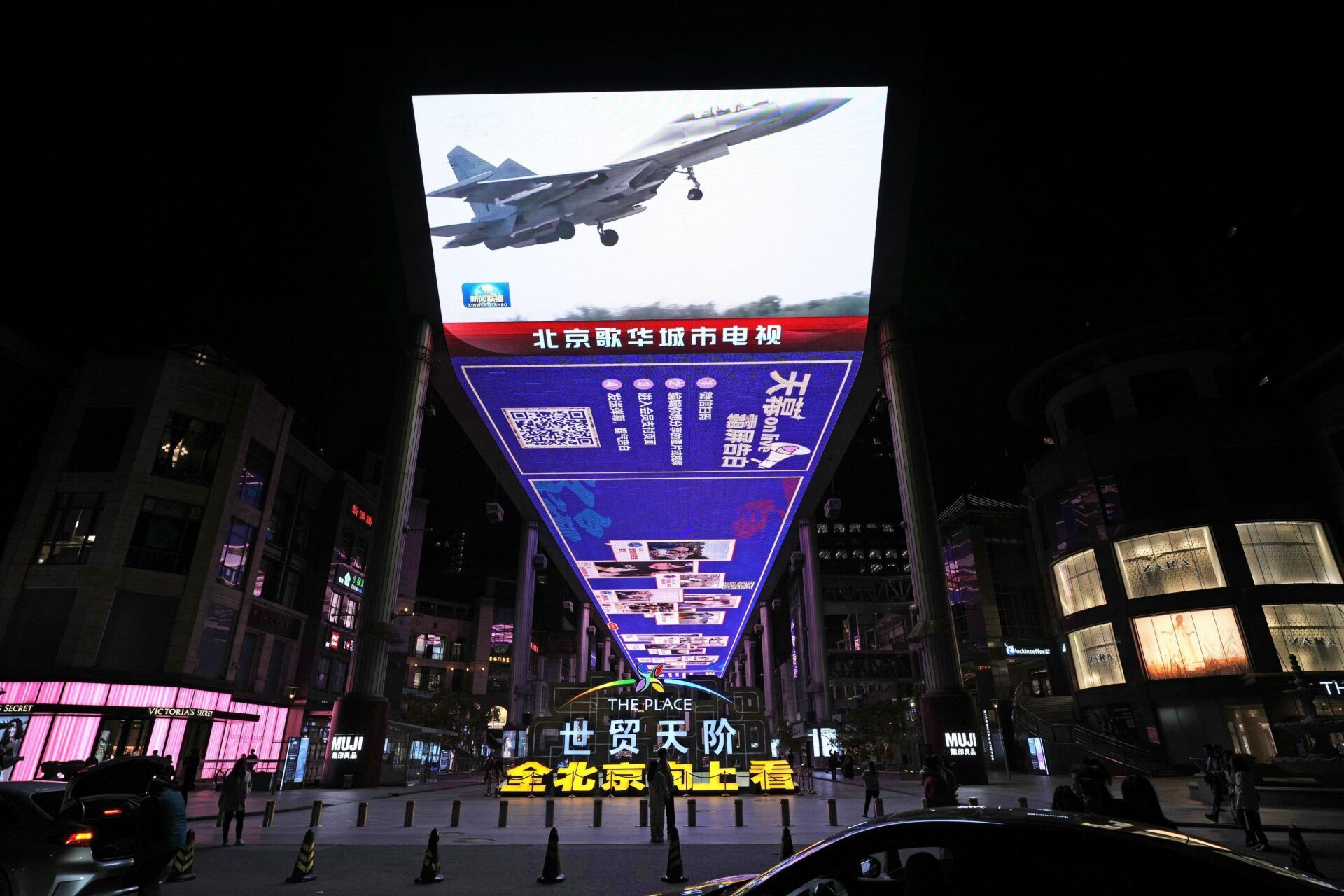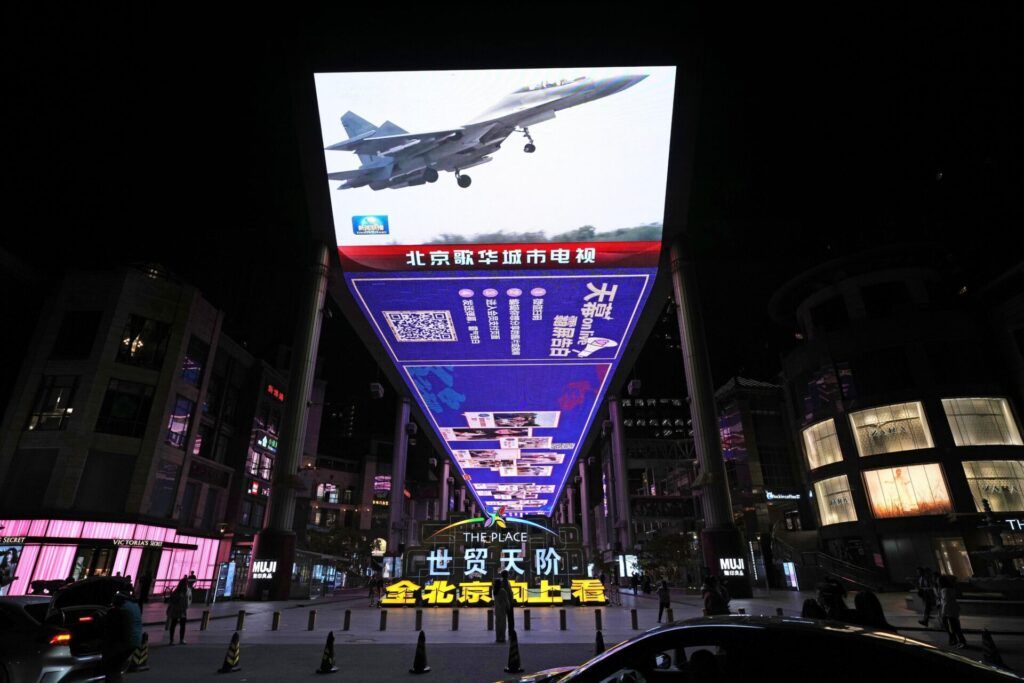How can a second Cold War with China be managed and its risks minimized?

 A large screen on a street in Beijing shows a Chinese military aircraft taking part in a three-day air and sea exercise around Taiwan that began on April 8, 2023. (Photo by Kyodo News via Getty Images)
A large screen on a street in Beijing shows a Chinese military aircraft taking part in a three-day air and sea exercise around Taiwan that began on April 8, 2023. (Photo by Kyodo News via Getty Images)
When they met last November, US President Joe Biden and China’s General Secretary Xi Jinping agreed to resume dialogue to promote peace. But Taiwan’s presidential election in May was the first real test of their tentative friendliness and sparked saber-rattling from Beijing. China’s large-scale naval and air exercises around the island, which Biden has vowed to defend, recalled the Cuban missile crisis and underscored that Taiwan is the epicenter of a new Cold War.
In the early stages of this rivalry, neither Biden nor Xi show any signs of reconsidering each other’s goals, strategies and assessments, or their desire to shape global norms. Both powers want to avoid war, but not at the cost of challenging their interests or values. Both are determined neither to fight nor to lose.
The only strategy available to them is therefore to create a framework for peaceful rivalry. The first steps will be difficult, as each country believes it has the upper hand and each rejects the other’s key concepts for international order.
The difficulty is compounded by differing historical premises. America’s 20th-century narrative portrayed the United States as a global savior in two world wars and the first Cold War. This legacy of just victory, based on wealth and love of freedom, justifies Washington’s continued assertion of global leadership in the United States and beyond.
China experienced sacrifices during the same period – famine, warlordism, the Japanese invasion, civil and class struggles – followed by the greatest and fastest economic rise in human history. This triumphant story of an ignorant nation becoming a rival to the resident superpower sets the stage for China’s campaign to command respect in the Western Pacific and assume leadership in the global South.
While China and the United States fought as allies in World War II, their interpretations of that conflict varied at the time and in retrospect. Most aspects of the Western war, including the West’s defining trauma of the 20th century, the Holocaust, meant little to China. (There is still no commonly used word for Holocaust in Mandarin.) For Westerners, milestones in modern Chinese history such as the Xinhai and Cultural Revolutions and Deng Xiaoping’s 1992 Nanxun have little meaning.
The United States and China have not only entered a new Cold War with different backgrounds, they have also started a new arms race with incompatible nuclear doctrines and military-strategic cultures.
As China modernizes and expands its nuclear arsenal, the balance of terror is becoming increasingly unstable and competition is expanding into the ungoverned areas of space and cyberspace. New technologies such as hypersonic weapons and artificial intelligence are creating new distortions and new risks of escalation in the event of a crisis.
The US-Soviet nuclear arms control negotiations in the early 1970s resulted in landmark agreements that enshrined the principles of parity and mutual deterrence based on vulnerability as the foundation of strategic stability. China has studied but not participated in this joint strategic learning process – another conceptual/experiential gap that will hamper risk reduction efforts from the start.
Beijing believes that there is no strategic parity between the powers that would justify the initiation of a strategic dialogue; the US has unilaterally chosen intense competition and imposed it on the geopolitically innocent developing country of the People’s Republic. To ensure peace, the US simply needs to accept that a China-centered Eurasia is natural, inevitable and desirable.
How can an effective dialogue begin under such circumstances?
For Washington, the key is to ignore conceptual barriers and appeal to China’s undeniable interest in avoiding an arms race with the United States that could escalate in the event of a crisis. The appeal should be public, tailored to American, Chinese and international audiences, and avoid attacking China’s political system or blaming it for the current situation.
Defense Secretary Lloyd Austin made a good start by declaring that “war with China is neither imminent nor inevitable,” and stressed that both sides have an interest in ensuring that “there are no misjudgments and miscalculations … that can spiral out of control.” The next challenge is to set a date for starting talks without preconditions and to lead them through the crises that surely lie ahead.
The talks must begin now, as the threat of a second Cold War grows. China’s rise as a nuclear power and the erosion of US conventional military superiority in Northeast Asia could prompt Xi Jinping to engage in what Nobel Prize-winning strategist Thomas Schelling called “a contest of risk.”
A lack of shared interests, narratives and strategic concepts, exacerbated by domestic pressures in each of the fragile superpowers, increases the likelihood of a war that neither side wants. If Washington and Beijing are to find common cause without triggering another Cuban missile crisis, they must put aside superficial criticisms of “dialogue for dialogue’s sake” and rediscover patient, determined diplomacy.


